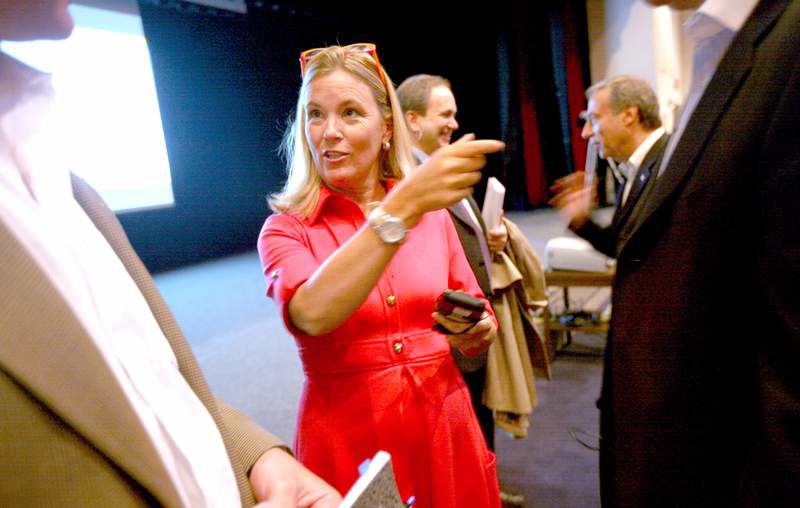Reader’s Digest moving steadily to the right of Middle America
Published 5:00 am Friday, June 19, 2009

- Mary Berner, president and chief executive of Reader’s Digest Association, is one of three women hired to turn around the fortunes of the 87-year-old magazine.
For 87 years, Reader’s Digest, that monthly breadbasket of condensed articles, can-do tales and grandmother-approved jokes, has aimed squarely at Middle America.
Now it is aiming a little more to the right.
Trending
After years of trying to broaden the appeal of Reader’s Digest, the publishers are pushing it in a decidedly conservative direction. It is cutting down on celebrity profiles and ramping up on inspiring spiritual stories. Out are generic “how-to” features; in are articles about military life.
“It’s traditional, conservative values: I love my family, I love my community, I love my church,” said Mary Berner, the president and chief executive of Reader’s Digest Association.
Like Time, Life, Newsweek and The Saturday Evening Post, Reader’s Digest was once the epitome of a general-interest magazine, one intended to appeal to a broad segment of the American public. But with a politically polarized public and a downturn in advertising, the survivors now seem to be slimming down. Reader’s Digest is decreasing its circulation to 5.5 million from 8 million and lowering its publication frequency to 10 times a year from 12.
“Magazines and cable channels are trying to figure out what they can add to the mix if people already have the basic facts from the Internet and elsewhere,” said Tom Rosenstiel, director of the Pew Research Center’s Project for Excellence in Journalism. “A lot of them will aspire to do that around ideology, because it’s the easiest way, the simplest way, to organize an audience.”
Whether that audience still exists for Reader’s Digest is one question. Whether the current management team can reach it is another.
Reader’s Digest was acquired in 2007 by a consortium of investors led by Ripplewood Holdings, a private equity firm in New York that brought in longtime magazine professionals to turn the company around.
Trending
Berner is a publishing powerhouse — the former chief executive of Fairchild Publishing and publisher of Glamour and TV Guide. Eva Dillon, the president of the Reader’s Digest Community, the division running the magazine and related books and Web sites, and Peggy Northrop, who is the U.S. editor-in-chief of the magazine, both cut their teeth in Manhattan publishing before making the commute to the 114-acre Reader’s Digest campus in Chappaqua, N.Y.
The project that signals Reader’s Digest’s future, Berner said, is a new multifaceted effort produced with Rick Warren, the evangelical pastor, called the Purpose Driven Connection.
For about $30, subscribers get a quarterly magazine with religious workbooks, along with DVDs featuring Warren, and membership in a social-networking Web site, including tips on what to pray for this week. It is available through churches and at Wal-Marts, and Berner wants to introduce other unorthodox distribution strategies.
“That is the model going forward,” she said.
In some ways, the shift is a return to the magazine’s roots. Founded in 1922 as a compendium of articles, Reader’s Digest reached its height of popularity in the 1970s, with a circulation of 17 million domestically.
But the good times have gone. After going public in 1990, it was bought the consortium led by Ripplewood in 2007 for $2.8 billion. It has lost money every year since 2005, and has $2.1 billion in debt.
Like Time and Newsweek, Reader’s Digest is now looking to focus on a more niche audience. Its advertising has held relatively stable this year: Ad pages are down only 8 percent this year, according to Media Industry Newsletter, compared with 23 percent for the industry, and it is no longer as dependent on pharmaceutical advertising. Readers, and advertisers, Dillon said, “really appreciate the wholesome nature of the magazine.”
Northrop, who will be promoted to global editor today, has already moved the magazine away from covers like “10 Easy Ways to Cut Big Bills” in favor of perky upbeat images. The best-selling cover of the last six months showed a harried-looking baby with the cover line “Oh, Cheer Up!: America’s Funniest Jokes.”
If the new direction works, Berner said, she may consider introducing magazines around Rick Warren-like religious personalities, along with increasing the amount of spiritual content in Reader’s Digest itself.
“As far as I’m concerned, I don’t care what the religion is, what the spirituality is, as long as it’s legitimate, there’s a built-in community and it’s global,” Berner said. “We don’t choose our partners to change the world, we choose them because we’re running a business. I guess it sounds cynical if you believe that to run a business to make money is cynical. But that’s what I’m paid to do.”







